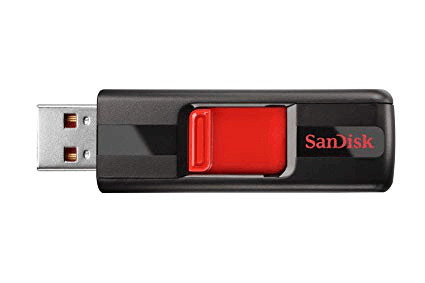USB flash drives are often used for storage, data back-up and transfer of computer files. It is a kind of very useful storage device. As a portable storage device, it has many advantages, of course, still some disadvantages. Read this post and know more!
A USB flash drive (USB stands for Universal Serial Bus) is a portable storage device that using flash memory with an integrated USB interface. A flash drive often refers to a data stick, a pen drive, a memory unit, a thumb drive, or simply a USB. Its size is often like a human thumb.

They are called “flash drives” because they use flash memories. Flash memory is a type of computer chip to store files. A USB flash drive can store and share information between devices like computers via a USB port. USB flash drives are often used with devices found in homes, workplaces, and schools, such as computers, video game consoles, music players, etc.
It is a portable storage device which can be rewritten and it is much smaller than a disk. Since its debut at the end of 2000, it has been like almost all other computer storage devices: storage capacity has risen and prices have fallen.
By March 2016, 8-256GB flash drives were often sold, while 512GB and 1TB devices were sold less frequently. In 2018, flash drives have a maximum storage capacity of 2TB. Some USB flash drives allow up to 100,000 write/erase cycles, depending on the exact type of memory chip used, and are normally considered to last 10 to 100 years.
Related article: Fix USB Flash Drive Not Recognized & Recover Data – How To Do
The Advantages of USB Flash Drives
USB flash drives have many advantages. The biggest advantages are: small and easy to carry, large storage capacity, low price, and reliable performance.
USB flash drives are small in size and extremely light in weight, generally around 30 grams. They are especially suitable for carrying around. You can hang a USB flash drive on the chest, hang it on the keychain, or even put it in the wallet.
Although the flash drives are small, they have a relatively large storage capacity. Early flash drives had a small capacity and one could only store 16-32MB files. Even so, they were 10-20 times the capacity of floppy disks at the time. With the development of technology, the capacity of USB flash drives has increased rapidly. The capacity is 2G, 4G, 8G, 16G, 32G, 64G, 128G, 256G, 512G, 1T and so on. This will increase as the technology gets better.
There are no mechanical devices in the flash drive and the shock resistance is extremely strong. In addition, the flash drive also has the characteristics of moisture-proof, anti-magnetic, high-low temperature resistance. It is safety and reliability.
Flash drives hardly infiltrate or scratch water or dust, which is a serious problem with older portable storage devices (such as optical discs and floppy discs). The solid-state storage design used in flash drives allows them to resist unintentional external impact.
Many flash drives support the mechanism of write protection, a switch on the shell, prevents the computer from writing or modifying data on the disk. Write protection prevents computer virus files from being written to the flash drive to prevent the spread of the virus.
And the compatibility of USB flash drives is particularly good: most computers support USB.
These advantages make flash drives ideal for carrying personal data or work files from one location to another, such as from home to school or office, or to various locations where you typically need to bring and access personal data.
The Disadvantages of USB Flash Drives
USB flash drives also have disadvantages.
Like other flash devices, USB flash drives have limited times of total reading and writing.
Flash drives that do not have a write protection function can easily become a way for a variety of viruses to spread.
Flash drives are more tolerant of external impact than mechanical disks, but can still fail or lose data due to severe physical damage. In an assembled computer, incorrect USB connection port wiring can also damage the circuitry of the flash drive.
Usages
A USB flash drive can be used not only as a removable storage device. It can also be applied to:
Booting the operating system: Most computers today can boot from a USB drive.
Audio Players: Many companies manufacture small digital audio players (MP3 players). These are actually flash drives that can make sounds.
Music storage and marketing: Many home and car music systems have USB ports. You can connect a USB flash drive to play music files.
Brand and product promotion: Flash drives are cheap. Therefore, they are sometimes used to promote products. At most technology fairs, many exhibitors will promote their products by giving away free drives. Typically, such drives will be labeled with the company logo as an advertising form.
Backup: The large memory size of newer flash drives means that they are increasingly used for short-term data backup. For example, a retail system uses a flash drive to record details of all sales for the day. This drive is used as a backup medium.
Related article: 5 Methods for USB Drive not Showing Files and Folders